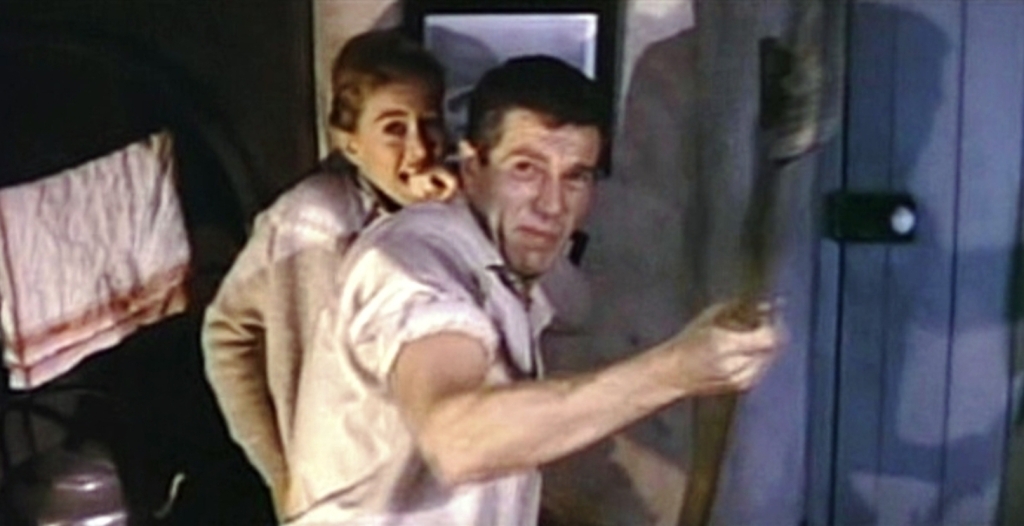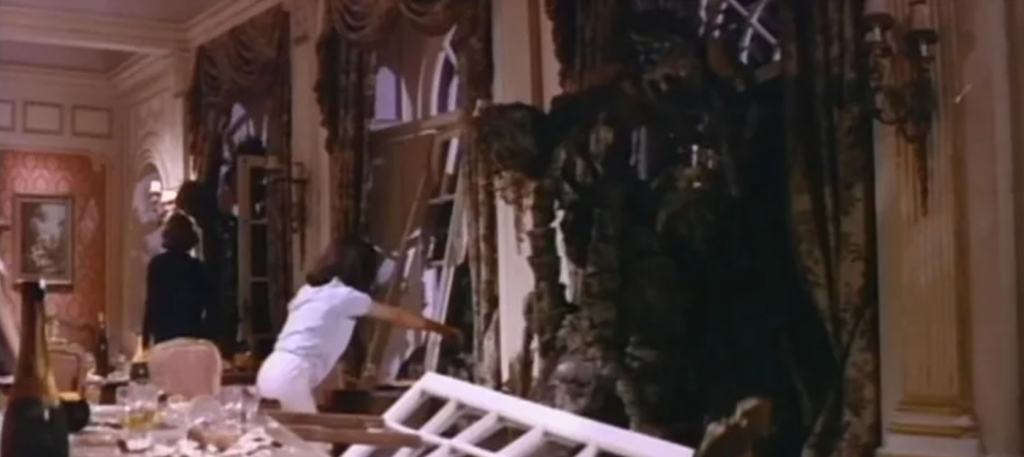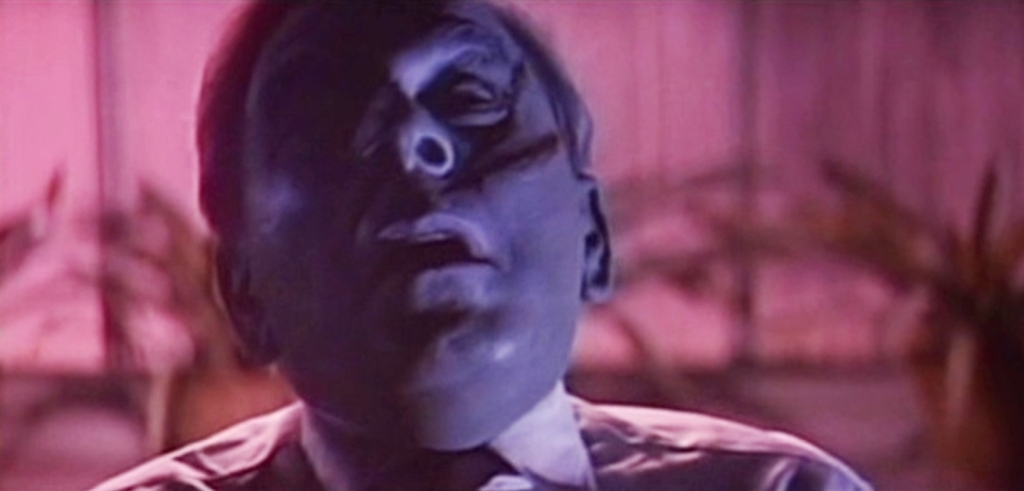
Killer plants gave always held their own little corner of the genre market, be it the hyper-verbal bloodlust of Audrey II from Little Shop Of Horrors to the spoofy nonsense of Attack Of The Killer Tomatoes to even the suicide inducing foliage of N. Night Shyamalan’s The Happening, but the absolute kingpin of this branch of sci-fi cinema is the humble Triffid.
First to make their root-based bow in John Wyndham’s 1951 novel The Day Of The Triffids, the viney villains have essentially been the go-to guys for eco-based dystopia since the moment their seeds were planted.
In 1963, cinema inevitably came calling to the notion of killer plant life and add it to the tail-end of all that paranoid 50s, hoopla that already had us nervously scanning the skies for UFOs and our social circles for communists. However, when lifted of the page, is the notion of a killer weed really that scary?

As the world aims their vunerable eyes skyward to drink in the lights and wonder of an epic meteor shower, no one could possibly imagine that the seeds for mankind’s downfall had already been sewn. You see, thanks to an earlier meteor shower, a new kind of plant named the Triffid had been discovered all over the globe and thanks to whatever cosmic fuckery is coming from the rays of this new, interstellar light show, these unassuming plants grow to an impressive size and start craving meat.
The morning after, tucked up in a hospital bed with his eyes bandaged, merchant navy officer Bill Masen awakes and unwraps his peepers to discover that virtually everyone in London has gone blind from watching the meteors that he was unable to view. After assessing the incredibly dire situation and avoiding all the blind people wandering the streets, he heads through London as it crumbles as trains with blind drivers plough into stations and blind pilots attempt to land despite having no idea where the hell they are. As fate would have it, Bill manages to save a still-seeing school girl, Susan from a panicked, unseeing riot and the two opt to ditch the capital city after a few close calls with some carnivorous Triffids.
Meanwhile, depressed scientist Tom Goodwin is at the end of his rope as studying sealife while stationed in a remote lighthouse has left him a bitter drunk with only his long suffering wife, Karen, for company. However, things are about to get worse as they witnesses the fall of humanity from a vantage point that looks like Fraggle Rock and even their remote Island seems to be suffering from a Triffid infestation.
While the arguing couple reconnect by fighting for their very lives against violent vegetation, Bill and Susan cross over to France and then head toward Spain in order to try and find a safe place, but despite some varied adventures with escaped convicts and a pregnant couple, it seems that the day of the triffid will never end.

If you needed any affirmation about how potent Windam’s novel and any subsequent adaptation of Day Of The Triffids has been, all you have to do is cast an eye over a lot of things that have occurred since as so much of it seems incredibly familiar. Someone waking up in a hospital to find that the entire world has gone to shit popped up in both 28 Days Later and The Walking Dead, take your pick and the notion of the entire plant losing its sight is the entire premise of the Jason Mamoa tv show, See. Hell, even the final moments of John Carpenter’s The Fog sees Adrienne Barbeau stranded in a lighthouse under seige just like what happens during this version of the movie and such referencing simply doesn’t happen by accident. Thanks to Windam’s original novel being utterly crammed with nightmarish scenarios that feel starkly relatable (the blindness, not the plants) it suggests an armageddon-in-waiting that has nothing to do with conquest happy martians or identity snatching pod people, but instead feels more than a dark, cosmic joke – I mean, how could you not want to watch the greatest meteor shower in recorded history?
The movie ticks off worst case scenarios with ruthless efficiency, leaving the fates of those unlucky enough to be rendered sightless while seated on a speeding train or a careening airplane to be horribly sealed and the (admittedly primitive) shots of London burning still manage to hit home. Even the fact that the movie has the natural limitations of any large scale cinematic escapade made during the 60s, doesn’t hinder its creepy nature; yes, a lot of the blind extras aren’t so much in a state of literal blind panic than just sort of milling around aimlessly and yes, the Triffids themselves, while certainly an alarming sight, fare about as well as any creature does that was manufactured during the period. However, it’s the bleakness that perseveres – the supposedly composed doctor who chooses to hurl himself out of a window than endure another moment living of perpetual darkness; the sight of a sightless French girl trapped between a wall and a horde of advancing Triffids – it’s all pretty powerful stuff…

Its just a shame then that the whole thing is rendered rather disjointed by something of a snafu that occurred while filming – you see, once the original cut of the movie was put together, the producers were dismayed that director, Steve Seekely, had only amassed enough useable footage to assemble 57 minutes of a finished film. Cue cinematographer Freddie Francis who directed the entirety of the lighthouse sequences that were shot after the fact with the bickering couple storyline. While the joins are minimal and the extra footage is of general good quality, there’s still something of a noticable disconnect between the separate strands of the movie that’s weirdly tough to ignore. On top of that, it heaps on an abrupt, cop-out, happy ending that make the brief, died-from-bacteria ending from War Of The Worlds look as nuanced and drawn out as the third Lord Of The Rings film.
The damage is nowhere near fatal, but the fact that the end of the movie is wrapped up by the last second discovery of the Triffids weakness (salt water, annoyingly) is not only insulting wrapped up with a bloody voice over, but if forgets that the real problem is that everyone is still sodding blind! As a result, the 1963 Day Of The Triffids tends to lag quite a way behind the infamous 1981 BBC miniseries in my mind that made me nigh on shit myself with fear on a regular basis back when I was stem high to a sunflower.

Undone by a sloppy ending, this first swing at Wyndham’s plant based pandemonium is still bursting with memorable moments and is a must for lovers of old school, off beat invasions, butvanyime who this this is the superior version can make like a Triffid and leaf…
🌟🌟🌟

The Krynoids of Doctor Who were the first impression on me in childhood when it came to killer plant life and quite a profound one. As for Day Of The Triffids, the BBC version from 1981 to this day is the only version I’ve seen and I have only very small bits of memory of it. It’s good to look back on this film as it celebrates its 60th anniversary this year. Thank you for your review.
LikeLiked by 2 people
The happy endings for such sci-fi films, whether the films were originally the best they could be or not, may feel like the most easily tacked on as opposed to darker endings that are made popular by Night Of The Living Dead and Invasion Of The Body Snatchers (1978). Some fans might still have a place in their hearts for certain escapisms. But the most realistic drama of how human beings can be influenced by such extraordinary dangers is what I like to be taken most seriously.
LikeLiked by 2 people